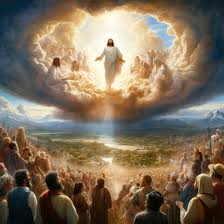For Whom the Bell Tolls: Ernest Hemingway
At the end of For Whom the Bell Tolls, Robert Jordan, the protagonist, faces the grim reality of death after being gravely injured during the Spanish Civil War. Despite his pain and growing sense of hopelessness, he reflects on his life, love for Maria, and the larger meaning of his actions in the war. He ultimately decides to stay and fight for the cause, even though he knows he won't survive.
The novel ends with a sense of tragic inevitability. Robert’s sacrifice is both personal and symbolic, representing the larger struggles of the war. His death is not just about him, but also about the many others who suffer in the fight for freedom. The closing lines, where he thinks about the hope of others continuing the fight after him, add a note of bittersweet dignity. The message suggests that in war, individual lives are fleeting, but the struggle and its ideals can endure.
Conclusion :
In simple terms, the ending shows the harsh reality of war, the importance of sacrifice, and the enduring hope for change, even in the face of death. It highlights the tragic, yet noble, nature of fighting for a cause larger than oneself.
Question : In what ways the flashback technique was used in "For Whom the Bell Tolls?
Answer :
Introduction :
In For Whom the Bell Tolls, Hemingway uses the flashback technique to give readers insight into Robert Jordan's past and his personal thoughts, as well as to deepen our understanding of his emotional and psychological state during the war.
Here are some ways the flashback technique is used:
-
Robert's Past: Throughout the novel, Robert reflects on his life before the war. He remembers his family, his education, and his experiences as a soldier in World War I. These flashbacks help the reader understand Robert’s motivations and internal struggles. For example, he recalls the death of his father and his disillusionment with the world, which shapes his perspective on the war.
-
Love for Maria: Robert’s memories of meeting Maria and falling in love with her are presented through flashbacks. These moments give emotional depth to their relationship and highlight the contrast between the violence of war and the tenderness of their love.
-
Emotional Struggles: Flashbacks also show Robert’s inner conflict, especially his feelings of guilt, fear, and doubt about his role in the war. He remembers previous experiences, both painful and joyful, which provide context to his thoughts about death and sacrifice.
-
Recollections of Other Characters: The flashbacks also reveal the pasts of other characters like Pilar, Anselmo, and others in Robert’s guerilla group. These glimpses of their histories help develop the broader theme of the war’s impact on individuals, giving depth to their motivations and relationships.
Conclusion :
Overall, the flashbacks in the novel serve to enrich the narrative, allowing the reader to see the characters' lives beyond the immediate events of the war, and to understand the emotional and psychological toll the conflict takes on them.
Question : Explain: Robert Jordan as a Typical Hemingway Hero.
Answer :
Robert Jordan in For Whom the Bell Tolls is a typical Hemingway hero because he embodies the qualities that are common in many of Hemingway’s characters. He shows stoicism by enduring pain and suffering without complaining, facing the harsh realities of war with a quiet strength. His courage and sense of honor are evident as he risks his life for a cause he believes in, willing to die for a larger purpose rather than for personal gain. At the same time, he grapples with inner struggles, feeling isolated and questioning the meaning of his actions, which is typical of Hemingway’s heroes who often deal with loneliness and uncertainty.
Throughout the novel, Robert confronts the inevitability of death, reflecting Hemingway’s focus on how his characters face mortality. Despite his tough exterior, Robert is also vulnerable, especially in his deep love for Maria, showing the emotional complexity often seen in Hemingway's characters. Overall, Robert Jordan represents the typical Hemingway hero through his strength, internal conflict, and the balance of toughness and vulnerability.
Question : Write your Views on the very brave character Pilar.
Answer :
Pilar, in For Whom the Bell Tolls, stands out as one of the most brave and powerful characters in the novel. From the moment we meet her, it's clear that she has an inner strength that commands respect. Pilar is not only physically strong but also emotionally resilient. Despite the brutalities of the war, she shows an incredible sense of loyalty to her comrades, especially Robert Jordan and her own guerilla group. Her bravery is seen not just in her actions, but in her unwavering belief in the cause, even though the war has taken a personal toll on her.
One of the most striking things about Pilar is her leadership. She is the heart and soul of the group, and her wisdom and experience guide the others through difficult times. She speaks openly about the harsh realities of the war and the sacrifices that must be made, showing both her courage and her practical approach to survival. What makes Pilar truly remarkable is her deep emotional intelligence. While she’s tough, she also cares deeply for those around her, providing support and comfort when needed.
In my view, Pilar represents the strength of women in times of war, not just as fighters, but as emotional pillars who hold everything together. Her bravery goes beyond physical action; it’s about being able to carry on with hope and dignity even when faced with overwhelming challenges. She is a symbol of resilience, showing that courage isn’t just about fighting, but about enduring and supporting others in the most difficult of times.
Here embed the link of movie.
Mov










.jpg)







